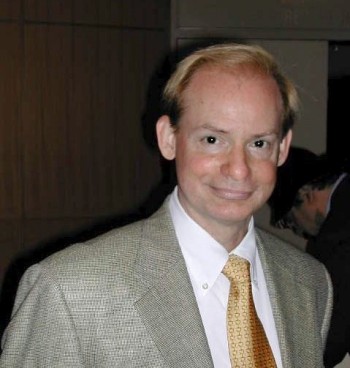UChange Begins!
 Saturday, March 8, 2014 at 06:17PM
Saturday, March 8, 2014 at 06:17PM This winter and spring our UChange Network is beginning a pilot project in social innovation design at New York University’s MAGNET Center with Professor Ricki Goldman. We are aiming to expand this to a collaboration with the Oslo University College of Architecture and Design and the EngageLab at the University of Oslo, and eventually to other partner institutions.

A group of graduate students working with Ricki on designing social improvement projects for youth are developing a model online platform to connect young people who are willing to teach their special skills to those who are interested in learning them. At an early session, Ola Erstad from Oslo and I linked in by skype video chat to Ricki’s group at work. We tested out an app for recording the video call, while a student onsite documented with a higher quality video recorder.

Among the larger aims of the UChange project are a better understanding of collaboration and learning in the context of studio-based design work, and particularly insights into collaborations across age- and background- diversity. We will be documenting the collaborative design process with video and records of online contacts and dialogue, from multiple points-of-viewing, across multiple timescales, and with insights from theories of culture and social activity. You can follow some of this work on our FaceBook page. Other periodic updates will appear here.
We Need ChangeLabs for Learning!
 Saturday, April 13, 2013 at 02:28PM
Saturday, April 13, 2013 at 02:28PM Let’s bring researchers, designers, and learners together to re-imagine how to support learning in the 21st century.
Call them Change Labs, Design Studios, or Social Innovation Incubators, there’s a new way to make a better world. Everywhere today the model of Design Research is being used to promote innovation not just in products and services, but in cities and social institutions. Here’s the recipe: bring together the people who use the services with people who know how to make them better and create prototypes whose successes and failures can teach us what we can’t imagine.
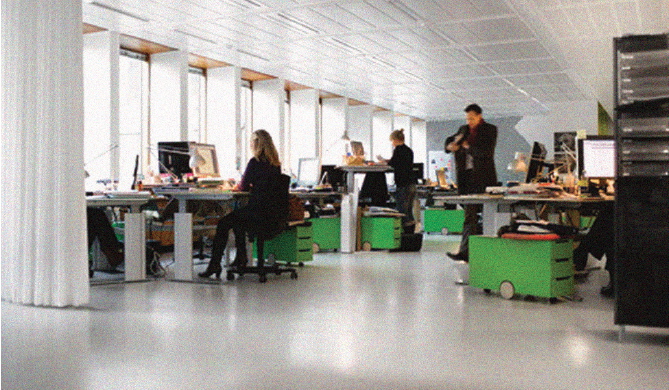
Mindlab, Denmark
Complex adaptive system theory, simulation modeling, big-data research, in-depth local ethnographies of use, rapid prototyping, distributed intelligence, iterative-participatory design cycles – a perfect storm of innovation tools for the perfect mess of wicked problems our fast-change lives present us with.
And one wicked problem in particular: How do we re-imagine a social support system for learning that can do a better job than today’s failing schools and tradition-bound universities?
Kids in school are bored, smart kids don’t feel challenged, kids with problems are warehoused. Our one-size-fits-all curriculum doesn’t fit any world they will be living in. Students in universities spend four years getting deeply into debt meeting requirements for degrees that don’t get updated even once-a-decade. We separate the learning of science, mathematics, computer tools, and social issues from each other, re-creating the silos that hamper creative innovation. We teach politically safe literature when kids want to create their own, controversial media. Schools and universities both educate for the slow-changing world that spawned them, not the fast-changing one that’s about to test our best survival skills.
We can do better. We can identify who needs to be at the table, in the studio, on the net, listening, thinking, talking, playing, creating, critiquing, prototyping, evaluating, improving, innovating. They’re the people who know by experience just how bad things are. We need the people who can say what they need. And the people who know how to mobilize relevant research. The people who want to create and innovate to make a better learning system. The people with experience in bringing other people together to design better futures. The whole-system mix.
We can determine how such a change lab would work. How big or small should it be. Both locally and face-to-face and also networked and distributed in space and time. We can generate its first new prototypes. We can propose the design brief it should start from. And we can start more than one.
Organizations, governments, and corporations need to realize that it doesn’t make sense to imagine more innovative communities, smarter cities, or better services without solving the problems of how to support the learning people will need to live productively in these challenging new worlds. Everyone recognizes that learning is the foundation for all the futures we want. Everyone knows that the education systems we have now are falling further and further behind people’s real needs.
We need ChangeLabs for learning, and we need them NOW!
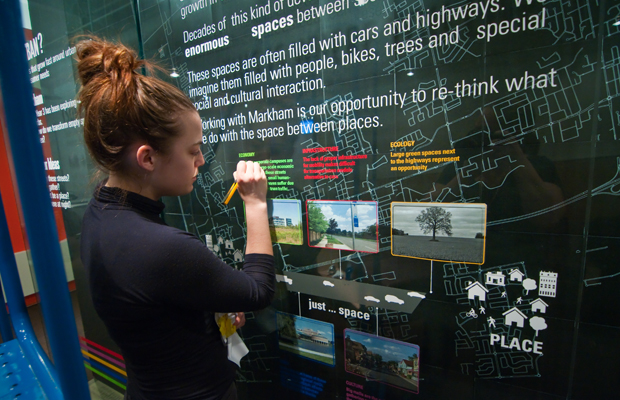 Institute without Boundaries, Toronto
Institute without Boundaries, Toronto
Is Play the Best Way to Learn?
 Friday, April 5, 2013 at 09:15PM
Friday, April 5, 2013 at 09:15PM If you want to use what you learn, and even improve on it, play may be the best way to learn.
From the fall of 2010 to spring 2012, I coordinated a study of an after-school program where 1st to 5th graders learned to play computer games with visiting university undergraduates. In the beginning they played an “educational” game designed to lead players toward some of the standard goals of the school curriculum in math, science, and literacy. But after a long day at school, these kids were more interested in playing than learning, and so they taught us a thing or two about what learning looks like when you put play first.

The original game we all played together was Quest Atlantis, which is a very thoughtfully designed educational game that includes elements of fantasy worlds and moral choices as well as quests and missions oriented to school knowledge. It worked well enough in the beginning, but most of our kids were younger than it was designed for. The undergraduates helped them with reading beyond their level, but soon enough the kids were teaching them how to play the game – the fun way! Which meant a lot more exploration of the game’s rich fantasy worlds, and playing chase and hide-and-seek in them, and a lot less completing of the official missions.
Seeing that the kids wanted more freedom to create and play on their own terms, we had the game designers add an empty world, just grass and distant mountains, that the kids proceeded to fill up with their fantasy houses, buildings, people, and stories. They learned a lot about creating a virtual world, but the real point of the world was (1) it was theirs, and (2) it was a place to play.

By the start of the second year, we knew the kids wanted to play a wider range of games, and we allowed a screened selection of commercial games that also had good opportunities for learning along the way. In World of Goo, Minecraft, Portal, and Flight Simulator the kids again put play first, but also couldn’t help learning about structural engineering, strategy and defense, three-dimensional orientation in space, and the basics of flight. Gameplay was an extension of playing with their friends, old and new, younger and older. Kids taught kids the tricks of the games, and kids taught newly arriving undergraduates as well. They had a chance to be the leaders and teachers, but it was always about the fun of playing together.
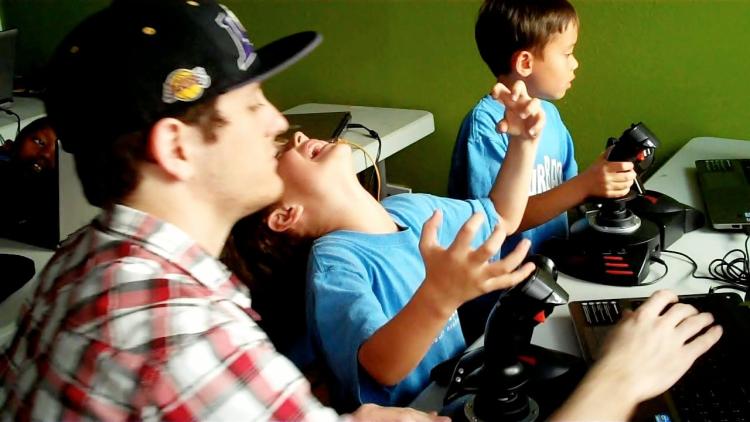
What it is about play that Nature has discovered with kittens and puppies, monkeys and people? Why do we enjoy it so much? What benefit is so important that Nature builds play into our make-up through the feeling of enjoyment and pleasure we take in it? Play is not just about the fun we have. It’s also about the freedom to explore possibilities, to break rules and make new ones, to try things out in different ways. Learning something is of no use if you can’t figure out how to apply it flexibly in new situations. Playful learning makes sure that everything you learn is learned along with a range of variations and alternative possibilities, and with a desire to feel free to try out new ones. Playful learning is the foundation for practical use and for innovation and creative re-use of everything we learn through play. It’s not popular with the people who want to tell us exactly what we should learn because that’s the one right answer. But it sure is popular with kids, and maybe we should all learn the lesson they’re teaching us.
A more detailed discussion of this project and the role of emotions and play in learning is written up here.
 Jay Lemke |
Jay Lemke |  3 Comments |
3 Comments | MOOCs Need Our Help!
 Tuesday, February 19, 2013 at 07:55PM
Tuesday, February 19, 2013 at 07:55PM MOOCs or Massively Open Online Courses are threatening, or promising, radical change in higher education. They need to be seen as one component of a new higher education ecology: a diverse system of complementary kinds of learning experiences.
What MOOCs offer are effective content delivery and global scale: well-designed lecture courses and assignments in place of mediocre ones, and tens or hundreds of thousands of simultaneous students instead of “merely” hundreds. They will also inevitably be available for free.
Universities are falling all over themselves and each other to be the first to put great MOOCs online and capture whatever brand-enhancement doing so will bring. New start-ups with different business models are offering online platforms for the new MOOCs, e.g. Coursera.org, EdX.org, and Udacity.com .

But all academics (perhaps those in the humanities moreso than those in the sciences) recognize that access to knowledge (think libraries) is not enough to enable education. Very bright and well-prepared students can go a long way by learning on their own, but most students need to interact with peers and mentors to get beyond the basics. All students benefit from discussions of ideas that raise critical perspectives and weigh alternative approaches to a topic. All students need some apprenticeship into the ways of thinking and feeling that characterize the great intellectual traditions of the natural and social sciences and the humanities. The higher goals of higher education require more than what MOOCs alone can provide.
What we need to know is this: What aspects of advanced learning can be readily scaled up for massive online audiences, and how? What more, in addition to MOOCs, is needed to make higher education work?
So far, I think we know this: In addition to online lectures and other resources, even modestly interactive ones, students need to participate in online discussions in mixed groups that include some minimum percentage of more able peers and mentors. No one knows what that critical percentage may be for various populations and learning domains. Current MOOCs are highly self-selective: those who enroll are often people who already have a college degree and students who find the going rough tend to drop out. To achieve the promise of global access to higher education, we need to know how to support the less well-prepared mass of potential students.
Once MOOCs are available that are superior at what they do to the average college lecture-style course, students will want and deserve credit for learning by MOOC. That will leave colleges and universities to provide, on campus, the other elements of a good education – those that come from thoughtful interaction with faculty and peers. So called hybrid or blended models mix learning from MOOCs with face-to-face learning, as we have always mixed learning from textbooks or lectures with smaller discussion classes. But universities will now have to do this without the revenue that has traditionally come from tuition paid for lecture courses and the credits they confer.

In this brave new world, the already over-priced 4-year degree will probably not survive. The American principle that students spend 2 years getting “well-rounded” and 2 years learning a major subject in depth makes much less sense when you can continue to get a broad general education throughout your life via MOOCs. General introductory lecture courses will be replaced by MOOCs in all fields. Students on campus will be expected to come into advanced courses already well prepared by MOOCs. This will play out differently in different fields, with scientific and technical fields giving up the most to MOOCs, and discussion-centered humanities courses or writing-improvement courses the least.
All of this is also going to put pressure on secondary education. MOOCs will erase the distinction between later secondary education and what is currently counted as early university education. Secondary schools are better equipped to do more of the small-scale preparatory work than they now do: teaching better reading and writing skills, initiating students into the art of productive discussion, supporting supervised hands-on and out-of-school experiences. Some MOOCs will be populated by a diverse mix of ages, from early teens to senior netizens. The role and structure of secondary education will change just as much as that of higher education, but in different ways.
I believe the key to making MOOCs work is to embed them in a broader learning ecosystem. MOOCs already include provision for online discussion groups, but these will only work if we find ways to scale-up the numbers of participating mentors and better-prepared peers and maintain optimal ratios. In addition to online experience, students will also need, especially early in their encounters with new disciplinary ways of thinking, face-to-face, hands-on, and real-world experiences and support for integrating these with what they are learning online.
I want to believe that MOOCs will drive higher education uphill toward the higher goals for which it was originally envisioned.
For more thoughts on related issues, see my blog entry “Re-Engineering Higher Education” below and these short essay drafts.
ChangeMedia & Envisioning Spaces
 Friday, December 14, 2012 at 06:15PM
Friday, December 14, 2012 at 06:15PM We need Spaces where we can envision better futures together, and new kinds of ChangeMedia to share our visions and help make them real.
Following on from my previous post here about Innovation Research, I want to present two ideas I have been developing together with Dr. Caspar van Helden in Amsterdam. Inspired by YouTube's creation of two new open-access video-production Spaces in Los Angeles and London, and his own research on engagement with popular culture and social networking, he's developing a broader concept of Envisioning Spaces, where young people and community members can come together with each other and with researchers, designers and design students, artists and others to create concrete presentations of their visions for better futures.
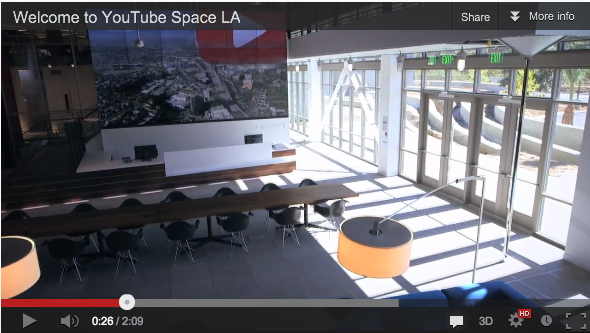
At the same time, Gabe Harp (@ Institute for the Future) pointed us to two videos that do present visions of the near-term future. One is a thoughtful animation about changes in how people can educate themselves for a career, the other is a slick professional video about near-future technologies:
http://youtu.be/8btSVA-3SsE (SocialStructing Higher Education, Institute for the Future, 2011)
http://www.youtube.com/watch?v=a6cNdhOKwi0 (Productivity Future Vision, Microsoft, 2011)
But they are both missing something: links to resources that people can use to take concrete steps toward realizing these visions in practice. This is what I mean by ChangeMedia -- both a concrete vision for a better near-term future AND embedded connections to resources for achieving it.
Those resources might include research and evidence about the need for change, to help persuade others; examples of concrete actions we can take to promote change toward this future; alternative, similar visions from different stakeholder viewpoints, etc. They might also include more detailed blueprints for change which lay out the interrelations between various elements of relevant complex systems, indications of the order in which steps toward change would need to be taken, likely obstacles, and sources of further relevant information.
Sometimes an initial concrete vision for change comes from a single individual, sometimes from a group or organization, but effective ChangeMedia need to show how visions for change also vary across stakeholders and people who have different relations to the kind of future envisioned. For a complex social system to change from within, there need to be contributions from people in many roles and re-alignments of alliances and commitments. ChangeMedia need to help people interested in change understand the kinds of processes that lead to change, as specifically as possible for the particular cluster of future visions being presented. This is why Caspar's concept for Envisioning Spaces provides just the right site for creating ChangeMedia.
Leading Design Schools are already working toward approaches to Social Design (of better services, better neighborhoods) and to applying the methods of Design Research and Design Education to helping us make our lives better.
ChangeMedia ultimately need to be open to additions and new perspectives, as well as questions, challenges, doubts, concerns, and further alternatives. They need to be improvable policy artifacts: tools for an evolving process of change. In their beginnings, however, it is most important that they offer a vision that is concrete enough and desirable enough to inspire people to both work towards it and work towards improving it.
The YouTube Space in London presents a video introduction that can be viewed as a step towards creating an Envisioning Space, but research needs to be done to learn how to support the creation of effective ChangeMedia and follow through to see genuine change happen.
